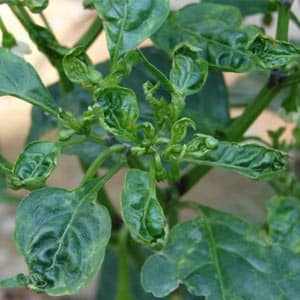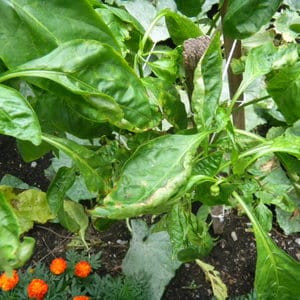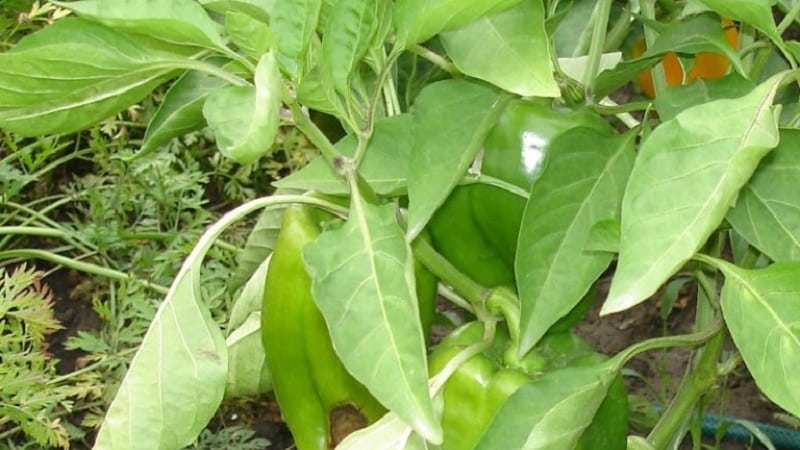Why pepper leaves curl and what to do about it
Pepper is a rather fastidious crop. This should not be forgotten when growing pepper seedlings at home, since strong seedlings are the key to a good harvest. It must be properly and timely watered, fed and maintained at temperature. The quality of plants is also affected by the composition of the soil and the quality of the seeds.
It happens that all the conditions for growing pepper seem to be met, but its leaves begin to curl, which can lead to the death of the plant and cause crop failure. Let's figure out why pepper leaves curl and what to do about it.
Reasons why pepper leaves curl
After the cotyledon leaf falls off, the pepper enters the active growth phase. During this period, the plant requires the most careful and proper care (watering, fertilizing), protection from pests and diseases. Leaves curl at this time for several reasons.

Insect (pest) attack
Cobwebs appearing on the leaves are a sign that the peppers have been attacked by spider mites.. It hides its offspring in curled leaves, which interferes with normal photosynthesis and growth of pepper. Spider mite larvae, feeding on plant sap, damage its root system. All this leads to the plant becoming weak and dying.
Aphids settle on leaves in entire colonies. It can be yellow, white or green. Aphids feed on the sap of leaves, causing them to weaken and curl. A sticky coating appears on them, which is secreted by the parasite.Pepper infection occurs when seedlings are transplanted into open ground. Ants that love the secretion secreted by aphids colonize it on pepper leaves.
The pimples that appear on the leaves indicate thatthat the pepper was attacked by a scale insect. This insect, covered with a waxy shell, sucks the juice from the leaves. They become stained and lose color.
It can be useful:
Step-by-step instructions for growing pepper seedlings
Diseases
 Peppers can be susceptible to both fungal and viral diseases., which are activated at elevated temperatures and humidity.
Peppers can be susceptible to both fungal and viral diseases., which are activated at elevated temperatures and humidity.
The first symptoms of blossom end rot (viral disease) is the curling of a leaf at the top of a plant. And if this disease is not stopped in time, it will affect the pepper fruits.
Curling of the upper leaves also occurs with verticillium.. The leaf turns yellow and falls off. The plant does not grow and the fruits do not ripen.
With phytoplasmosis, pepper leaves grow small. They curl, bend upward, turn yellow and fall off. But the pepper fruits do not ripen.
Growth abnormality
It happens that the midrib of a leaf outstrips the entire leaf blade in growth., as a result of which the leaves curl and fold into a boat. This occurs in young, growing peppers. This abnormal growth may be caused by a lack of light. This does not harm either the plant or the crop; over time, the leaves even out.
Failure to comply with growing conditions
In addition to a lack of light, the leaves of the crop may curl if improperly watered., if the temperature regime is not observed. Therefore, it is important to comply with all agrotechnical requirements for growing pepper. Curling can occur with a lack of potassium and phosphorus.
If there is a lack of potassium in the soil, pepper leaves are deformed regardless of their location. If the leaf curls and turns blue, this indicates a lack of phosphorus.
What to do
First you need to find out the reason for the deformation of the sheet, and then deal with a specific problem.
Pest Control
 If the leaves are curled, and tubercles, holes, cobwebs or plaque appear on them, which means they were attacked by harmful insects. They can be seen when examining plants.
If the leaves are curled, and tubercles, holes, cobwebs or plaque appear on them, which means they were attacked by harmful insects. They can be seen when examining plants.
While there are few pests, they are eliminated by physical measures:
- collect by hand (for example, scale insects, since drugs do not penetrate its protection);
- rinse with warm water;
- wipe or rinse the leaves with a solution of laundry soap (dissolve 1 piece of laundry soap in 5 liters of water, repeat the procedure 2-3 times);
- the ground can be watered with a weak solution of potassium permanganate (1 tsp per 1 liter of water).
Also, while the number of insects is small, you can use folk remedies:
- Pour 1 glass of onion peel into 1 liter of boiling water, leave for 24 hours, strain and spray every 5 days (not only plants, but also the soil);
- Pour 0.5 cups of wormwood into 1 liter of boiling water, leave for 10 hours, spray three times with a break of 5 days.
If folk remedies don't help, then you will have to use chemicals such as “Bi-58”, “Aktar”, “Fitoverm” and others. When using them, follow the norms, terms and frequency of processing indicated on the packaging.
Read also:
Disease Control
Pepper diseases can be identified by characteristic spots, which increase and the leaf curls, as well as the smell of rot.

Most often, peppers are affected by blossom end rot.. With this disease, the leaf curls downwards. In most cases, the development of the disease occurs due to a lack of calcium. To reduce the acidity of the soil, sprinkle it with ash or dolomite flour. Root and foliar feeding with saltpeter is also done (200 g of saltpeter per 5 liters of water, done every 10 days).
On a note. A folk remedy helps in the fight against blossom-end rot: 2 onions, 1 garlic, 5 liters of water - leave for a day, spray 4 times with a break a week.
When the leaves become small, lose color, dry out and fall off, and the bush stops growing and the peppers do not ripen, then it is possible that the plant is infected with phytoplasmosis. This disease can be treated only at the initial stage (treatment with Stomp or Fitoplasmin). In other cases, the infected plant must be destroyed and the soil disinfected.
Elimination of agrotechnical errors
With a lack of potassium, leaves curl from the edges. In this case, the plants need to be fed:
- pour each pepper with a solution of potassium sulfur - 0.5 l (1 tbsp. potassium sulfur per 5 l of water);
- sprinkle with wood ash - 0.5 tbsp. ash onto moist soil for each plant.
With a lack of phosphorus, the leaves curl inward, and the flowering of the plant is delayed. In this case, a solution of superphosphate will help (pour 1 tbsp of superphosphate with 5 liters of boiling water, leave for 24 hours, add 5 liters of water, pour 0.5 liters per plant).

Prevention
To get a large harvest of sweet peppers, as well as to prevent the leaves of the plant from curling, it is important to take proper care:
- Ventilate the greenhouse. This will reduce the risk of developing fungal diseases, as well as soil rotting.
- Observe the temperature regime. Pepper is a heat-loving plant, the recommended temperature is within 30 °C.It is important to avoid sudden changes in temperature.
- Control humidity in the greenhouse or greenhouse. For seedlings, the humidity indicator is 75%, for established plants - 60-65%.
- Carry out regular watering. It should be frequent, but in small quantities. Excess water leads to damage to plant roots and rot. Watering should be done during the day, before dark.
- Monitor the condition of the soil. Loosen the soil and feed the plants regularly. The soil should be moisture- and breathable, high in humus, low in salts and acids (pH 6.0 - 7.00).
- Inspect periodically plants for the presence of pests and diseases.
Conclusion
Bell pepper is a capricious crop that requires constant care. It is very sensitive to soil composition, watering and temperature conditions, and is also susceptible to disease and insect attacks.
Leaf curling is a sign that the plant needs help. To do this, you need to determine the cause of the twisting and take measures to eliminate it in order to prevent the death of the plant and get a rich harvest.
Have you confused anything with saltpeter 200g per 5l of water?